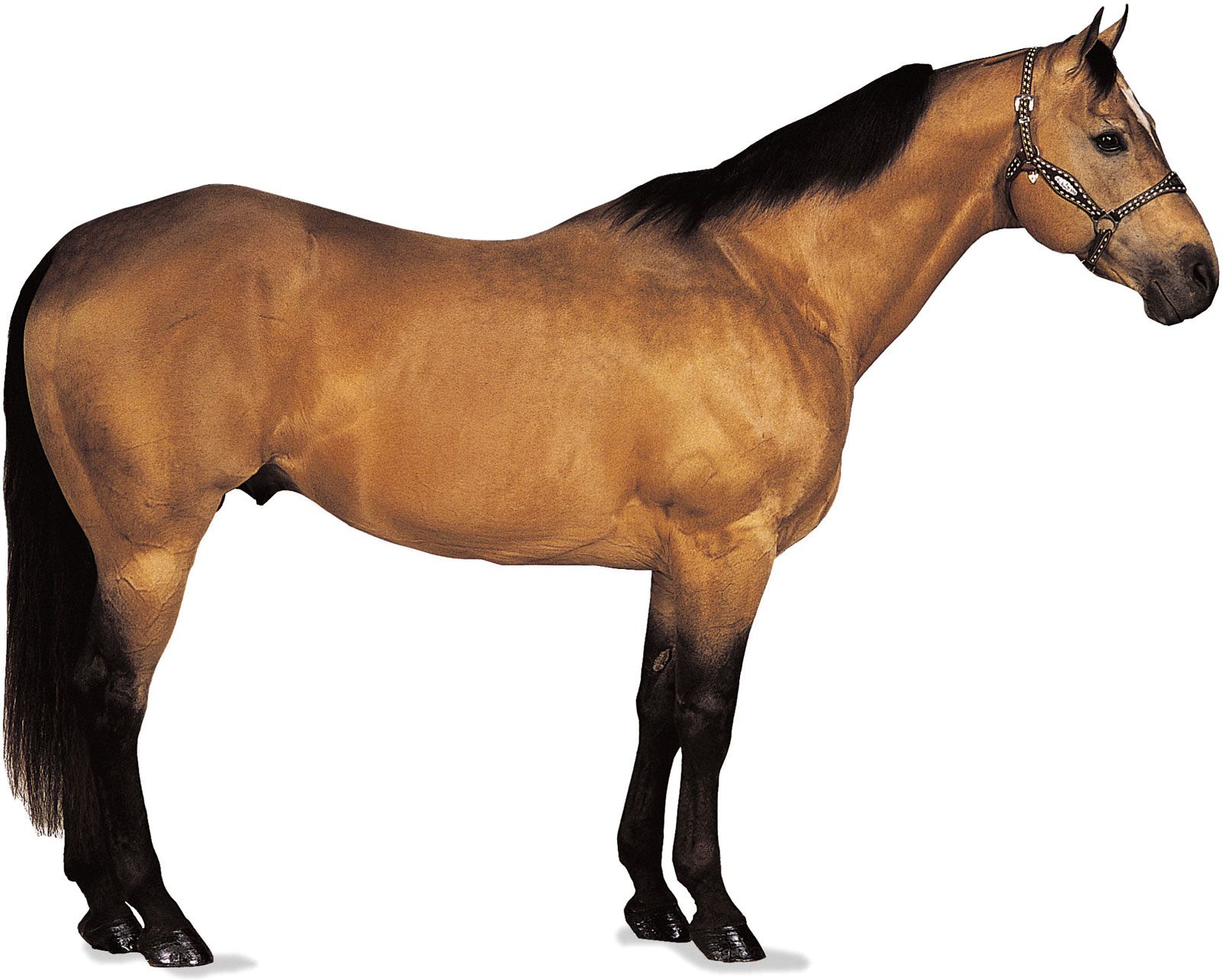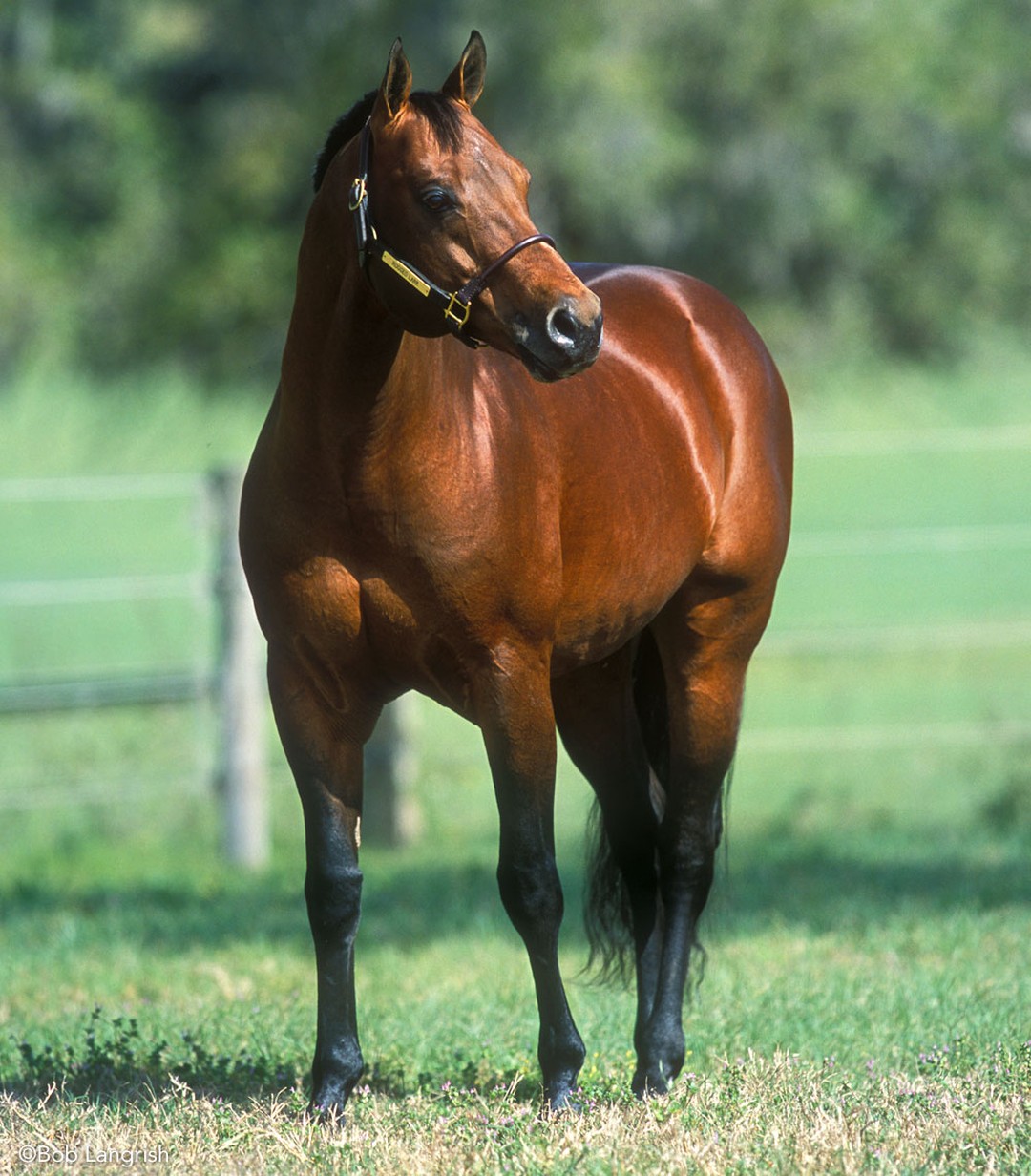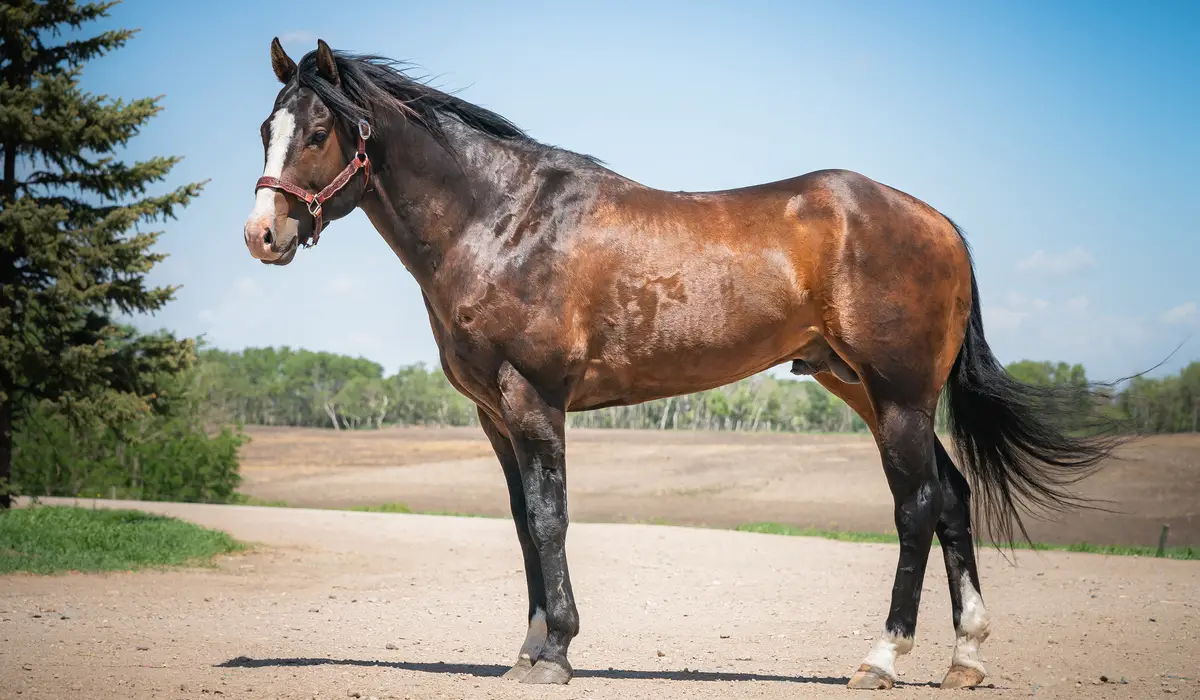The American Quarter Horse, known for its speed, strength, and intelligence, has become one of the most popular horse breeds in the United States. This versatile breed has a rich history and a wide range of uses that make it an excellent choice for many equestrians. In this blog post, we’ll explore the various quarter horse uses, delve into quarter horse history, and discuss the unique characteristics that make the American Quarter Horse a standout breed in the equine world.
The Enduring Saga of the American Quarter Horse

Embarking on a journey through the annals of the American Quarter Horse reveals a fascinating chronicle intertwined with the nation’s own narrative. This breed stands as a testament to the spirit of the United States, adapting through centuries from a settler’s partner to a revered racing and working companion. The story of the Quarter Horse is a reflection of America’s evolution, mirroring the innovative spirit and changing demands of its people.
From Frontier Necessity to Racing Phenomenon
These steadfast companions of the early settlers were indispensable in pioneering efforts, serving as vital aids in agriculture, transport, and protection. With the burgeoning of colonial settlements, the demand for a versatile horse gave rise to the American Quarter Horse’s acclaim for its short-distance racing prowess, setting the stage for the sport’s enduring popularity.
Melding of Spanish and English Heritage
The intersection of Spanish equine heritage with English stock played a pivotal role in shaping the American Quarter Horse. The Spanish horses, celebrated for their sturdiness and nimbleness, blended with English horses, prized for their swiftness and elegance. This fusion of qualities gave rise to a breed characterized by robustness and speed, continually refined over generations through astute breeding practices.
The Crucible of the Frontier
The westward migration of settlers cast the American Quarter Horse into the crucible of frontier life, where adaptability was paramount. Breeders selectively favored traits such as resilience, intellect, and a calm demeanor, equipping these horses to excel in cattle handling and land work. The formation of the AQHA in 1940 was a milestone, codifying breed standards and maintaining meticulous records of lineage.
Enhancements from Thoroughbred Ancestry
With an already established reputation for versatility, breeders aimed to augment the American Quarter Horse’s natural sprinting talent by integrating Thoroughbred bloodlines. This selective crossbreeding resulted in a marked increase in speed, complementing the breed’s multifaceted nature. The legacies of renowned Thoroughbreds have become an indelible part of the American Quarter Horse’s genetic tapestry.
Chronology of the Breed’s Evolution
- 1600s-1700s: Fusion of English and indigenous equine strains marks the breed’s inception
- 1800s: The breed’s adaptability and utility gain recognition across the expanding frontier
- Early 1900s: Thoroughbred lineage is introduced, enhancing the breed’s velocity
- 1940: Inauguration of the AQHA, defining the breed’s standards and preserving its history
Guardianship of a Legacy
The AQHA remains vigilant in its mission to maintain the breed’s authenticity, meticulously documenting ancestries and upholding stringent quality standards. This dedication ensures that the American Quarter Horse not only honors its storied origins but also continues to adapt and thrive in modern equestrian endeavors. With a global presence of over five million registered specimens, the breed’s heritage endures as a testament to its historical significance and a cornerstone for its future success.
Unveiling the Multifaceted World of the American Quarter Horse

The agility and robustness of the American Quarter Horse have secured its role as a preferred breed in numerous equestrian activities. These horses have a continuing impact on the equestrian landscape, demonstrating their adaptability in various roles and settings. We will examine the breadth of quarter horse disciplines, highlighting their aptitude in different equestrian pursuits.
Quarter Horse Racing: A Display of Sheer Velocity
At the racetrack, Quarter Horses are renowned for their breathtaking speed over short distances, particularly in quarter-mile bouts that have influenced the breed’s very name. This aspect of quarter horse racing underscores their explosive acceleration and the meticulous organization behind these exhilarating events.
Delving into Racing Culture
- Race Types: The racing circuit features a range of events, including futurities, derbies, and match races, each governed by specific regulations.
- Enthusiast Engagement: The racing scene draws a dedicated audience, with betting enhancing the spectator experience.
- Specialized Preparation: Training a Quarter Horse for competition focuses on maximizing their inherent swiftness and agility.
Quarter Horse Work: Integral to Agricultural Life
In agricultural settings, Quarter Horses are treasured for their work ethic and dexterity. Their innate cow sense and agility make them indispensable for livestock management. These equine partners possess the endurance necessary to withstand the demanding conditions of rural labor.
Farm and Rodeo Integration
- Rural Applications: Their solid work ethic shines in activities ranging from cattle herding to farm maintenance.
- Rodeo Participation: In rodeo sports, Quarter Horses are essential for timed and judged events, showcasing their skill and training.
Quarter Horse Riding: A Versatile Companion for Riders
Engaging in recreational riding on a Quarter Horse offers immense gratification, stemming from their calm and consistent nature. Their suitability for family outings and trail adventures, along with their performance in competitive riding, speaks to their versatility and cooperative spirit.
Diverse Riding Experiences
- Exploring Trails: Their reliability and sure-footedness make them excellent for navigating different landscapes.
- Educational Roles: Their amiable and forgiving temperament makes them ideal for instructional settings, including therapeutic programs.
Quarter Horse Disciplines: Show Arena Proficiency
In competitive show environments, Quarter Horses excel in events that require agility, strength, and finesse. Their conformation is well-suited for the dynamic maneuvers in reining and cutting, while their quickness is an advantage in barrel racing. Beyond these, they also participate in classical equestrian sports, demonstrating their broad capabilities.
Excelling in Equestrian Sports
| Discipline | Description |
|---|---|
| Reining | An event assessing the horse’s athleticism through a sequence of circles, spins, and halts. |
| Cutting | Tests the horse’s agility and predictive abilities in isolating a cow from its herd. |
| Barrel Racing | A timed competition that highlights the horse’s speed and maneuverability around a cloverleaf barrel pattern. |
| Western Pleasure | Evaluates the horse for delivering a smooth and controlled ride, with an emphasis on demeanor and enjoyment. |
| Hunter Under Saddle | Emphasizes the horse’s gait and manners, reflecting the heritage of English riding disciplines. |
| Dressage | Though not as prevalent, some Quarter Horses compete in dressage, underscoring the harmony between horse and rider. |
With these diverse quarter horse uses and disciplines, the breed demonstrates its remarkable adaptability and competence. Their ability to thrive in a wide spectrum of equestrian sports solidifies their status as a top pick among horse aficionados with varied interests and pursuits.
Exploring the Unique Characteristics of the Quarter Horse

The Quarter Horse is an emblem of the equestrian landscape in the United States, renowned not only for its athletic build but also for its engaging personality. This breed captures the spirit of its lineage through its physical and behavioral traits, enchanting both enthusiasts and casual observers alike with its captivating presence and noteworthy attributes.
Distinguishing Physical Features
Observing the Quarter Horse, one cannot help but notice the striking variety of colors that these horses display, from the deep reds of sorrel to the golden tones of palomino. The breed’s coat, with its rich palette, draws attention to its well-muscled frame and balanced proportions. Standing at a height that complements both agility and strength, the Quarter Horse’s conformation is a testament to its broad appeal and functional design, marked by an animated and engaging expression.
- Stature: Averaging between 14 and 16 hands in height
- Physique: A balance of muscular power and agility
- Facial Features: A broad forehead that hints at their alertness and cognitive abilities
- Coat Varieties: An array of colors including bay, black, and beyond
Temperament and Intelligence
The Quarter Horse’s temperament is a blend of keen intelligence and a placid disposition, making them suitable for riders of various skill levels. They exhibit remarkable learning abilities and a willingness to cooperate that endears them to trainers and owners. The breed’s sociable nature and the trust it places in human companions underscore its position as a versatile and dependable partner.
- Nature: Known for their tranquility and friendliness, accommodating a wide audience
- Cognitive Skills: Efficient learners that respond well to training
- Social Affinity: An inherent ability to connect with people
Versatility Across Equestrian Pursuits
The versatility of the Quarter Horse is a defining aspect of the breed, reflecting its capacity to excel in a multitude of equestrian activities. This flexibility is evident in their smooth transition from diligent ranch hands to spirited competitors across various events. Their intuitive understanding of different scenarios underscores their value in diverse equestrian roles, reinforcing their popularity among riders with varying interests.
- Ranch Duties: Showcasing their strength and natural instinct for herding
- Sporting Competitions: Exhibiting their competitive edge and athleticism
- Leisure Activities: Providing a dependable and pleasurable ride
- Instructional Roles: Acting as a cooperative and tolerant educator
The Quarter Horse stands as a multifaceted breed, its features and capabilities shaped by a heritage that prioritizes both form and function. Its stature and appealing looks, combined with a stable temperament and exceptional adaptability, affirm the Quarter Horse’s place as a paragon of equestrian versatility and an enduring symbol of equine distinction.
Enhancing American Quarter Horse Welfare and Performance

Providing optimal care for an American Quarter Horse is essential for their health and performance capabilities. Comprehensive care involves more than just basic needs; it encompasses a tailored approach to nutrition, regular exercise, preventive health measures, and a supportive environment. This article will highlight the key aspects of maintaining the vigor and longevity of these cherished equines.
Nutrition Tailored to Individual Needs
Nutritional requirements for an American Quarter Horse can vary based on their activity level, age, and health status. A high-quality diet with the right balance of nutrients is essential for their well-being.
- Forage Focus: Providing ample quality hay or pasture is the foundation of their diet.
- Supplemental Feeds: Grains and specialized feeds may be introduced to address additional energy needs, especially for performance horses.
- Nutritional Supplements: To ensure all dietary needs are met, supplements can provide essential vitamins and minerals that may be lacking.
Importance of Adequate Hydration
Water consumption is vital for health, with horses requiring substantial amounts daily, especially when active or in warmer climates. Continuous access to fresh water aids in preventing dehydration and associated health complications.
Regular Exercise for Health and Condition
Regular physical activity is crucial for the American Quarter Horse’s health, helping to maintain muscle condition and prevent obesity. Various types of exercise, from structured workouts to leisurely rides, are beneficial.
Environmental Enrichment
Mental engagement is as important as physical exercise. Introducing different settings, challenges, and social interactions can keep these horses mentally stimulated and happy.
Proactive Health Maintenance
Preventive health measures are paramount in avoiding diseases and ensuring the longevity of American Quarter Horses. Regular check-ups and upkeep can thwart many common health issues.
- Immunizations: Key to preventing infectious diseases.
- Parasite Management: Custom deworming programs are essential for controlling internal parasites.
- Dental Care: Regular check-ups can prevent dental issues that could affect feeding and performance.
- Hoof Maintenance: Consistent care supports hoof integrity and can prevent lameness.
Early Problem Detection
Being alert to signs of distress or illness enables early treatment, which can be critical to recovery. Familiarity with your horse’s normal behavior and vitals is invaluable for timely response to health issues.
Ensuring Emotional Well-Being
Even with their calm nature, American Quarter Horses can experience stress due to various factors. Stress management strategies are necessary to maintain their mental health.
- Consistent Routines: A predictable environment helps reduce anxiety.
- Travel Preparedness: Making transportation as stress-free as possible ensures the horse’s comfort during journeys.
Attentive and specialized care is the cornerstone of a thriving American Quarter Horse, whether they are competing, working, or simply being a companion. Embracing a comprehensive approach to their diet, exercise, health care, and emotional welfare ensures these equines continue to be dynamic members of the equestrian community.
Iconic American Quarter Horses: Celebrating Equine Excellence

The history of the American Quarter Horse is dotted with exceptional individuals who have left indelible marks on the breed. Celebrated for their athletic achievements and contributions to the breed, these horses have become symbols of the American Quarter Horse’s versatility and prowess. This article pays tribute to the notable equines that have excelled in various domains, from the racetrack to the realms of entertainment and breeding.
Champions of Speed
The legacy of the American Quarter Horse is enriched by the champions that have competed on the racing circuits. These equines have not only displayed exceptional speed but have also significantly influenced the sport and the breed’s development.
Icons of the Racing World
- Dash for Cash: Renowned for his impressive racing career, this stallion’s influence extends far beyond his time on the track.
- Impressive: Beyond his strength and grace, this horse’s progeny have perpetuated his legacy in the show ring, particularly in halter competitions.
- Easy Jet: His combination of agility and strength secured his status as a champion and as a sire who contributed to the breed’s lineage.
Famed Equines Beyond the Track
Some American Quarter Horses have captured the public’s imagination outside the competitive spheres, making their mark in popular culture and becoming beloved figures.
Celebrated American Quarter Horses
- Trigger: Known as the most iconic horse in film history, Trigger’s performances with Roy Rogers made him a star in his own right.
- Scamper: This barrel racing legend, partnered with Charmayne James, won the admiration of many with his skill and competitive spirit.
Influential Bloodlines in Quarter Horse History
Certain Quarter Horses have become renowned for their contributions to the breed’s genetic pool, having a profound impact on its development and the traits associated with the breed.
Progenitors of Excellence
- Three Bars (TB): Although a Thoroughbred, Three Bars’ offspring inherited his swift attributes, significantly shaping quarter horse racing.
- Poco Bueno: As a foundation sire, Poco Bueno’s excellent conformation and temperament have been sought after traits within the breed.
The accomplishments and lineages of these remarkable American Quarter Horses have not only brought them fame but also played critical roles in defining the characteristics and abilities of the breed. These equine luminaries exemplify the essence of the American Quarter Horse, from their dominance in quarter horse racing to their broader cultural impact and breeding influence.
Quarter Horses are renowned for their agility and speed, especially over short distances, making them a favorite in the equestrian world. If you’re interested in learning more about different types of horse equipment and breeds, take a look at our detailed articles. Discover the purpose of the martingale in our guide, What is a Martingale for Horses. Explore the strength and versatility of draft horses in our article on What Percheron Horses Are Used For. Or delve into the world of sport horses with our piece about What Hanoverian Horses Are Used For. Each breed has unique characteristics and uses, much like the Quarter Horse, celebrated for its performance in rodeos, horse shows, and as a reliable work horse.
Choosing an American Quarter Horse
Is the American Quarter Horse Right for You?
When considering if the American Quarter Horse is the right fit for you, reflect on your equestrian goals and lifestyle. Their versatility and amiable nature make them suitable for a variety of riders, from those seeking a dependable family horse to competitors aiming for high performance in quarter horse disciplines.
How to Buy an American Quarter Horse
Buying an American Quarter Horse requires research and due diligence. It’s important to assess the horse’s health, temperament, and suitability for your intended use. Consulting with experienced breeders or trainers can help guide you in making an informed decision.
Quarter Horse Breeds and Bloodlines
Understanding quarter horse breeds and bloodlines is crucial for prospective owners. Different lines may excel in specific quarter horse uses, such as racing or work. Familiarizing yourself with the breed’s diverse lineage can help you select a horse that aligns with your aspirations.
- Consider your equestrian goals
- Research health and temperament
- Consult with professionals
- Understand bloodlines for intended use
In conclusion, the American Quarter Horse is a breed defined by its storied past, outstanding performance in various disciplines, and a temperament that endears it to riders worldwide. Whether you’re drawn to quarter horse racing, looking for a reliable workhorse, or seeking a companion for leisurely rides, the Quarter Horse’s versatility and affable nature make it a top contender in the equine world. With proper care and management, an American Quarter Horse can be a treasured member of your family or a champion in the arena, embodying the spirit of American horsemanship with each stride.



